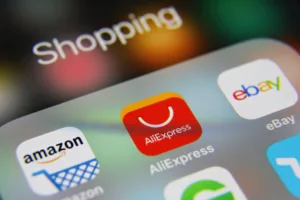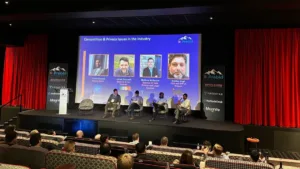By Nathan Lomax, co-founder and director of Quickfire Digital
The challenge of increasing customer lifetime value (CLV) as a toy store is an obvious one: children grow up. Unless you’re of the size of Smyths or pack the power of Amazon, you’ll most likely be selling in a niche area – and that often means specialising for end customers who work their way through a varied selection of favourites pretty damn quickly. Any sense of loyalty can be fleeting – dinosaurs in January, a summer of superheroes and football cards in the winter – which means being laser-focused on targeted marketing becomes crucial to grow that important CLV metric.
This can be achieved through a range of tactics aligned to the understanding that brands may have a finite amount of time with each customer, including:
- Personalised marketing based on purchase history and the thrill of the chase to complete collections
- Loyalty programmes that appreciate the desire to build families of characters in order to facilitate children’s playtime and imagination
- Bringing extra incentives through the unboxing moment – arguably as much fun for young ones as the toys themselves
- Leveraging technology to deliver competitive pricing.
Be agile in your marketing
Any merchant worth their salt will understand the importance of targeted, personalised marketing to their customers. Within the toy sector this becomes even more crucial to grow customer CLV.
While your store may sell a range of figures, for example, there’s very little point promoting a Frozen Elsa character to someone who has recently purchased the latest Spiderman. They might both be owned by – and even tagged in your store as – Disney but they’re unlikely to feature in the same bedroom-floor fight scene or adventure.
It is also important to appreciate that Spiderman needs others to join his alliance, and villains to do battle with; Elsa needs Anna and Hans to tackle her next big ice escapade. Once invested in a range, children seek anything that can grow their games. And while a complete collection is nearly always beyond their grasp, the thrill of trying to get there can’t be overstated.
If you’ve ever started a sticker or card book collection, you’ll know this: once complete, the fun is over. The joy is trying to reach that point.
Toy merchants can use targeted, agile and fast-paced marketing that appreciates this. While still in the Frozen realm, recommendations and offers should align: SMS promotions offering time-sensitive discounts on Elsa’s castle and the Sven cuddly. Wait too long and Olaf’s appeal will have melted.
While the foundation of a loyalty programme can still operate on a rewards-for-points structure, consider where to apply rewards upgrades: Buy Anna now and receive double points, and so on.
Agility is the key here. While you might have a Frozen customer segment, the move to Rainbow High might be only weeks away. But if you’ve delivered a smart, valuable customer experience previously then the chances of that customer buying elsewhere is reduced.
Making the most of the unboxing moment
While it’s understandable for ecommerce merchants to think only in the online realm, there is the opportunity to unwrap value at the height of excitement: unveiling the new toy for the first time.
Through the use of personalised inserts, stores can appeal to parents and children alike with customised messaging and content. QR codes can be used to offer discounts on the next Barbie purchase, or direct parents to relevant products to drive up that CLV metric. Personal messages can be attached for the recipient to add a little extra magic.
Stores with a strong desire to create accompanying content can send fans to appropriate story-telling pages or suggestions for games. If the toy requires build instructions, a link to a useful video can only help build customer trust and satisfaction.
Stay ahead of the pricing game
While loyalty programmes, valuable personalised marketing and surprising customers with little extras are all tactics to be deployed, price obviously always plays a major part in customer choice. And while brand loyalty plays an important role, staying competitive on price is crucial. Technology solutions exist to make this easier for all merchants.
Brands can use platforms to dynamically adjust their pricing based on real-time market data and inventory levels, therefore maximising profitability without sacrificing competitiveness.
Pricing strategies can also be instrumental in devising effective loyalty programs. By understanding the pricing dynamics and customer preferences, brands can tailor loyalty initiatives that resonate. Offering exclusive discounts, early access to new releases, or special promotions can not only attract but also retain customers.
A nod to the games sector
As for the gaming sector, the longevity element often isn’t necessarily as pressing. Whether it’s video or board games, jigsaw puzzles or the whole world of the ‘kidult’, the behaviour and interests are often deep-rooted – so more traditional tactics can be employed to increase CLV.
One of the most important metrics of any ecommerce website is Average Order Value (AOV), and intelligent cross-selling, free shipping thresholds, well-crafted bundles and more all help to increase AOV and, therefore, CLV.
Summary
When it comes to toys, time is of the essence. Often, there’s a limited window of opportunity with children switching from one favourite to the next incredibly quickly – they really do grow up so fast these days. That means customers can come and go pretty quickly too – so merchants need to strike when the iron is hot.







